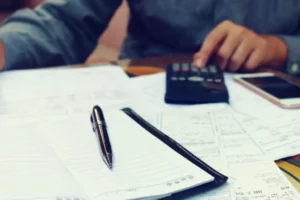Content

Are you in the know on the latest business trends, tips, strategies, and tax implications? SVA’s Biz Tips are quick reads on timely information sent to you as soon as they are published. To calculate EPS, you take the total net income and divide it by the number of outstanding shares of the company.
The following balance sheet is a very brief example prepared in accordance with IFRS. It does not show all possible kinds of assets, liabilities and equity, but it shows the most usual ones. Because it shows goodwill, it could be a consolidated balance sheet. Monetary values are not shown, summary (subtotal) rows are missing as well.
How to Read & Understand a Balance Sheet
A balance sheet is an important financial tool that helps investors gain insight into a company and its operations. The transactions are recorded in a balance sheet in such a way that assets are always equal to liabilities. Investors and https://www.bookstime.com/articles/balance-sheet-basics creditors also refer to the balance sheet and its ratios for getting detailed insights about the business and making informed decisions. A balance sheet is an informative document, but it alone cannot reflect how a company is faring.
If you’ve found that your balance sheet doesn’t balance, there’s likely a problem with some of the accounting data you’ve relied on. Double check that all of your entries are, in fact, correct and accurate. You may have omitted or duplicated assets, liabilities, or equity, or miscalculated your totals. Here are the steps you can follow to create a basic balance sheet for your organization. Shareholders’ equity refers generally to the net worth of a company, and reflects the amount of money that would be left over if all assets were sold and liabilities paid. Shareholders’ equity belongs to the shareholders, whether they be private or public owners.
Accounting 101: Accounting Basics for Beginners to Learn
By analyzing your liquidity position (i.e. cash and receivables), you’ll see whether you can afford upcoming expenses or handle a market shock. Additionally, you can analyze historical trends in your assets and liabilities to ensure your business is running properly, or to identify problem areas quickly. If the numbers don’t look good, it can prompt an internal shift in how you conduct the business. Below, we’ll delve into the purpose of creating balance sheets (also known as net worth statements) and then provide a step-by-step guide of how to make your own. Another asset, Office Equipment, may have a fair market value that is much smaller than the carrying amount reported on the balance sheet.
What are the 4 things on the balance sheet?
Components of a Balance Sheet
Balance sheets list line items in each section, including subtotals and total assets, liabilities, and shareholders' equity. Most balance sheet items are reported at book value, although GAAP specifies fair value accounting for certain balance sheet accounts.